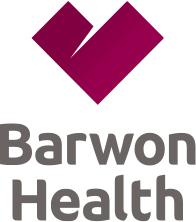Quotes attributable to Associate Professor Sean Jespersen, Chief Medical Officer
It is important to note that 100 per cent of our most urgent Emergency Department (ED) patients are seen on time and non-urgent cases do not impact the wait time for those requiring immediate treatment.
We always treat patients according to clinical need and unfortunately some people have to wait because others are in greater need.
With current attendances of about 73,000 each year, University Hospital Geelong’s ED is one of the busiest in the state.
Geelong’s growing population means increased numbers in each triage category, but we also see a rise in the acuity of people presenting to the ED, which means patients have complex conditions that require more treatment time.
Non-urgent cases make up seven per cent of our presentations, and one in 10 of these are admitted to hospital. These presentations tend to have prolonged waiting times during busy periods, when there can be 20 new patients an hour for several hours.
Staffing levels align with times of peak demand however winter is one of the ED’s busiest times of the year.
We are constantly reviewing our model of care in relation to staffing in an attempt to minimise waiting times while providing safe, high quality care.
The hospital continues to strive to improve targets in the setting of a 5.4 per cent increase in ED attendances over the past 12 months.
According to audited data, the three months leading up to 30 June show 68 per cent of category 2 ED patients where seen within the benchmark of 10 minutes from arrival, up from 64 per cent a year earlier.
Additionally, 88 per cent of patients arriving in an ambulance during this quarter were transferred to a cubicle within the target time of 40 minutes, up from 85.8 per cent a year earlier.
We are aligning our medical workforce to better meet the demands of our population growth, which includes receiving additional funding from the State Government for staffing in the short term.
We have also made adjustments to a more team-based model of care in the ED, which incorporates additional doctors. New models of care are underway throughout the hospital to improve ED pressure and access to inpatient beds.
We continue to monitor peaks and demands and also look at patient flow through the system.
University Hospital Geelong has introduced several innovations in an attempt to improve the percentage of people seen on time. As an example, this week we have made some changes to our team based medical model of care to enhance our ability to see patients in a more timely fashion.
Hospital performance data is publicly available here..
